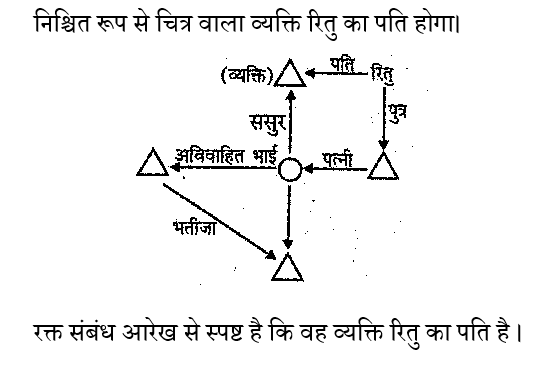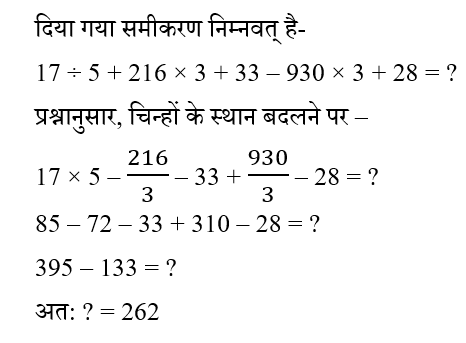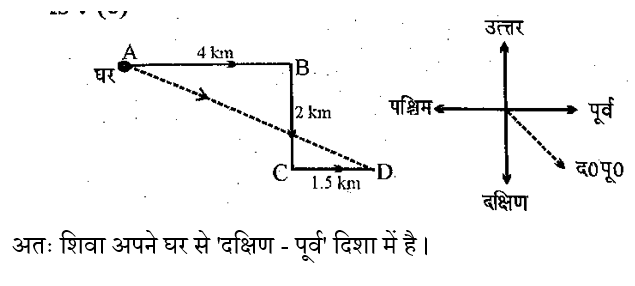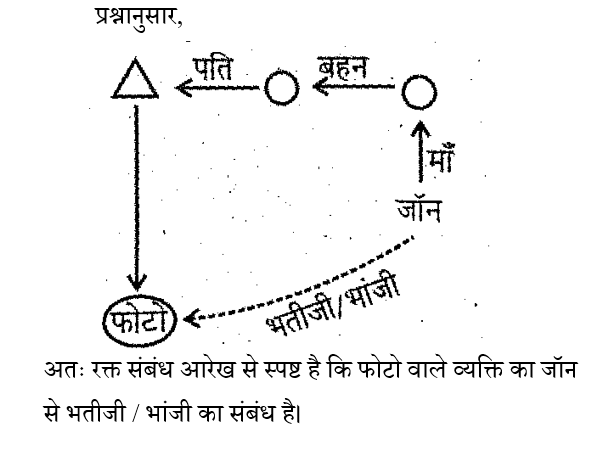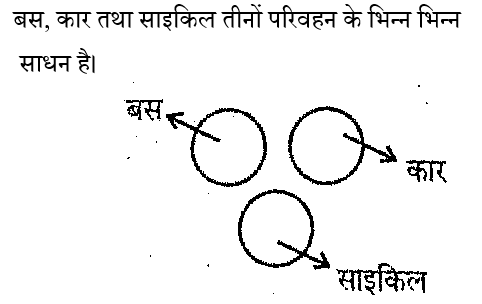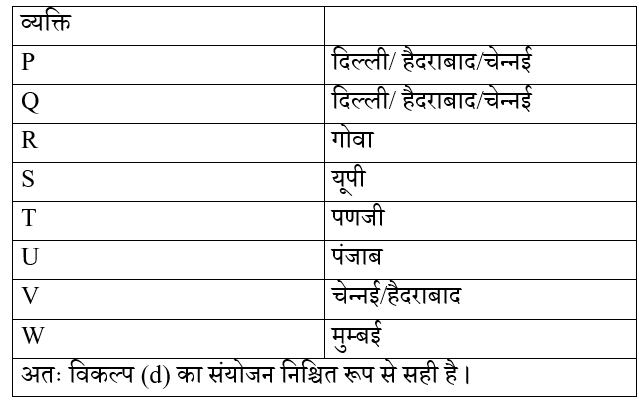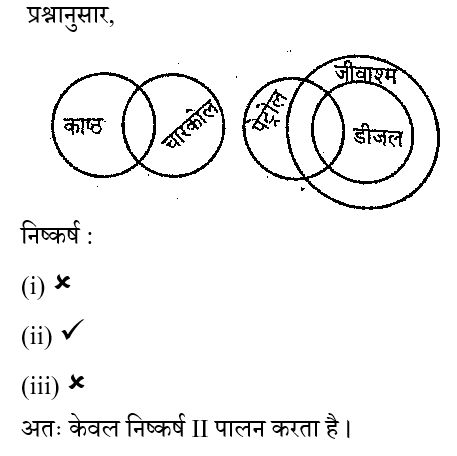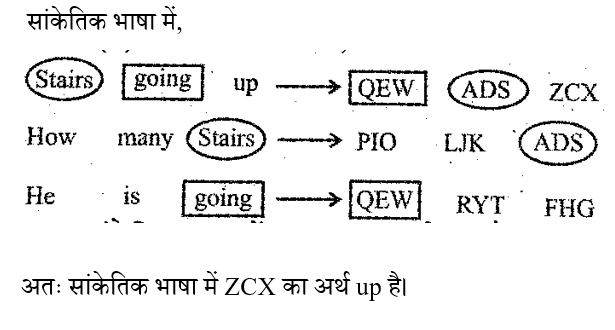Question 1:
Ritu points to the photograph of a man and says, "He is the grandfather of the only nephew of the only unmarried brother of my son's wife." How is that man related to Ritu-
रितु एक व्यक्ति के चित्र की ओर संकेत करते हुए कहती है, "वह मेरे पुत्र की पत्नी के एकमात्र अविवाहित भाई के एकमात्र भतीजे के दादा है।" वह व्यक्ति रितु से किस प्रकार संबंधित है-
Question 2:
If the positions of '+' and '–' are interchanged in the following equation, and also the positions of '×' and '÷' are interchanged, then what value will come in place of question mark (?) in the equation?
यदि निम्न समीकरण में '+' और '–' के स्थान परस्पर बदल दिए जाते हैं, और साथ ही '×' और '÷' के स्थान परस्पर बदल दिए जाते हैं, तो समीकरण में प्रश्न चिह्न (?) के स्थान पर कितना मान आएगा?
17 ÷ 5 + 216 × 3 + 33 – 930 × 3 + 28 = ?
Question 3:
Shiva walked 4 km towards east from his house and turned towards south and walked 2 km. Finally, he walked 1.5 km towards east. In which direction is he now from his house?
शिवा अपने घर से पूर्व की ओर 4 किमी चला और दक्षिण की ओर मुड़कर 2 किमी चला। अंत में, वह पूर्व की ओर 1.5 किमी चला। वह अब अपने घर से किस दिशा में है?
Question 4:
Pointing to a photograph, John said, “She is the only granddaughter of the husband of my mother's sister.” How is the person in the photograph related to John?
एक फोटो की ओर इशारा करते हुए जॉन ने कहा, " वह मेरी मां की बहन के पति की इकलौती नातिन है ।" इस फोटो वाले व्यक्ति का जॉन से क्या संबंध है?
Question 5:
If '+' means '×', '–' means '÷', '×' means '+' and '÷' means '–' then what will be the value of 216 ÷ 3 + 48 – 6 × 21?
यदि '+' का अर्थ '×', '–' का अर्थ '÷', '×' का अर्थ '+' और '÷' का अर्थ '–' हो तो 216 ÷ 3 + 48 – 6 × 21 का मान क्या होगा?
Question 6: 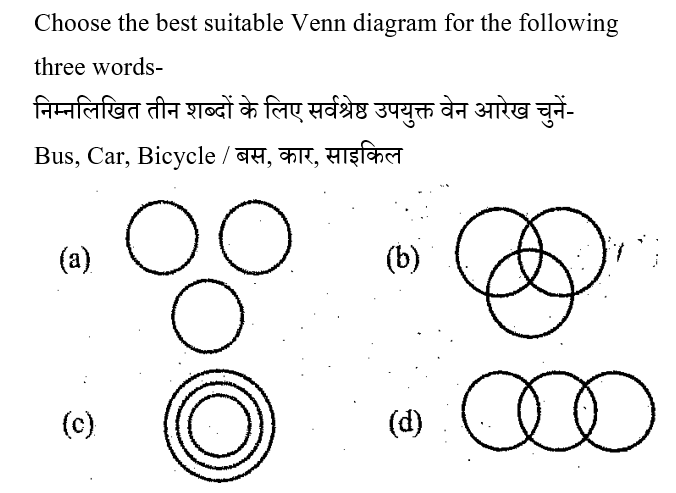
Question 7: 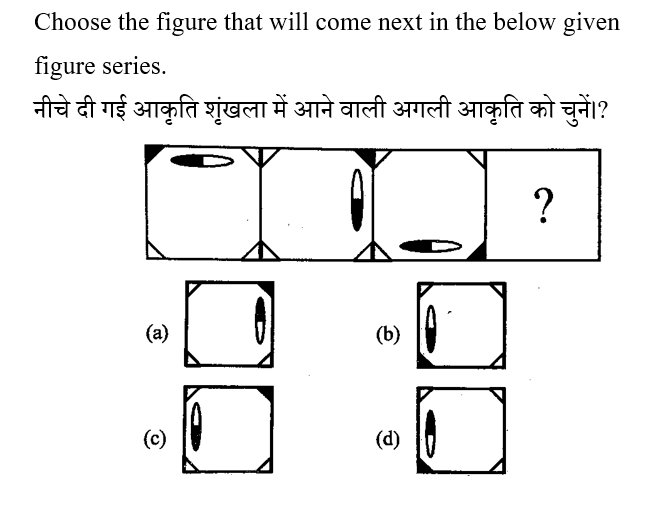
Question 8:
Eight persons P, Q, R, S, T, U, V and W are going to their respective destinations Delhi, Mumbai, Chennai, Hyderabad, Goa, Panaji, Punjab and UP (not necessarily in the same order). No two persons have the same destination. R is going to Goa. Not to Delhi, Mumbai or Punjab. S and T are going to UP and Panaji respectively. P and Q are not going to Punjab or Mumbai. U is not going to Delhi or Mumbai.
आठ व्यक्ति P, Q, R, S, T, U, V तथा W अपने-अपने गंतव्य स्थान दिल्ली, मुंबई, चेन्नई, हैदराबाद, गोवा, पणजी, पंजाब तथा यूपी जा रहे हैं ( जरूरी नहीं कि इसी क्रम में हो)। कोई भी दो व्यक्तियों का गंतव्य स्थान समान नहीं है। R गोवा जा रहा है। दिल्ली, मुंबई या पंजाब नहीं जा रहा है। S तथा T क्रमशः यूपी तथा पणजी जा रहे हैं। P तथा Q पंजाब या मुंबई नहीं जा रहे हैं। U दिल्ली या मुंबई नहीं जा रहा है।
Which of the following combinations is definitely correct?
निम्नलिखित में से कौन सा संयोजन निश्चित रूप से सही है?
Question 9:
Three statements are given followed by three conclusions I, II and III. Consider the statements as true, even if they seem to be at variance with commonly known facts, and then tell which of the given conclusions logically follow from the given statements.
तीन कथन और उनके बाद तीन निष्कर्ष I, II और III दिए गए हैं। कथनों को सत्य मानते हुए विचार करें, भले ही वे सामान्यतः ज्ञात तथ्यों से भिन्न प्रतीत होते हों, और बताएं कि कौन से निष्कर्ष तार्किक रूप से दिए गए कथनों का पालन करते हैं?
Statements: / कथनः
कुछ काष्ठ, चारकोल हैं। / Some wood are charcoal.
कुछ पेट्रोल, डीजल हैं। / Some petrol are diesel.
सभी डीजल, जीवाश्म हैं। / All diesel are fossils.
Conclusions: / निष्कर्षः
(i) कुछ पेट्रोल, चारकोल हैं। / Some petrol are charcoal.
(ii) कुछ जीवाश्म, पेट्रोल हैं। / Some fossils are petrol.
(iii) कुछ काष्ठ, डीजल हैं। / Some wood are diesel.
Question 10:
In a certain language:
'Stairs going up' means QEW ADS ZCX
'How many stairs' means PIO LJK ADS
'He is going' means QEW RYT FHG
Which of the given options means 'up'?
एक विशिष्ट भाषा में:
'Stairs going up'का अर्थ QEW ADS ZCX है
'How many stairs' का अर्थ PIO LJK ADS है
'He is going' का अर्थ QEW RYT FHG है
दिए गए विकल्पों में से किसका अर्थ 'up' है ?

